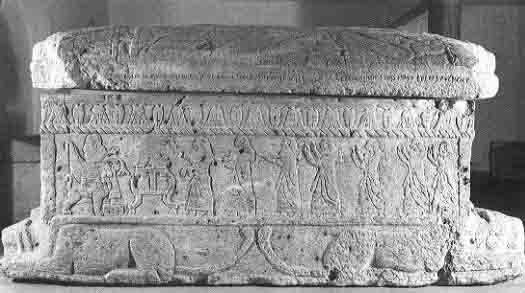Image Details

J. B. Pritchard/Univ. of Pennsylvania Museum, Philadelphia
A royal banquet appears in relief on the 11th-century B.C.E. sarcophagus of King Ahiram of Byblos, now in the Beirut National Museum. The bearded Ahiram sits on a throne made of sphinxes while his attendants pile cups and dishes on the offering table before him. This is the earliest known Phoenician depiction of a banquet commemorating the dead, which became a common theme in Phoenician and Syrian funerary art.
As on the Pozo Moro monument, reclining lions mark the four corners of the sarcophagus. Associated with the underworld—and especially with Nergal, the Mesopotamia god (mentioned in 2 Kings 17:30) who reigned in the netherworld for part of the year and who is often depicted with a lion-headed scepter—lions frequently appear on funerary monuments.
